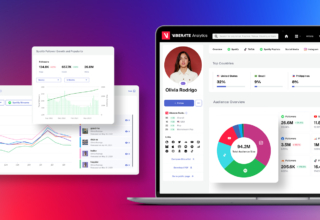
Are you getting closer to retirement age? If so, it’s important to start thinking about how you’ll support yourself in your golden years. After all, you’ll need enough money to cover your living expenses, health care costs, and other essential needs.
In fact, the average 65-year-old can expect to spend $285,000 on healthcare costs in retirement. And that’s just for basic expenses — it doesn’t account for long-term care or other potential needs. Currently, the Roth IRA interest rate is between 7% and 10% in average annual returns.
To make sure you’re prepared, start saving now. If you haven’t already, open a retirement account and begin contributing as much as you can. (If your employer offers a retirement savings plan, such as a 401(k), take advantage of it.)
Table of Contents
What Are Roth IRA Accounts?
Roth IRA accounts are a type of retirement account that allows you to contribute money after taxes have been taken out of your pay. When you retire, you can take your money out tax-free. There are two main types of Roth IRA accounts: traditional and Roth.
- Traditional IRAs let you deduct your contributions from your taxes, but when you withdraw them in your retirement, you’ll have to pay taxes on them.
- Roth IRAs work oppositely: you don’t get a tax deduction for your contributions, but your withdrawals are tax-free.
Roth IRA accounts have several benefits:
- You can withdraw your money tax-free in retirement
- You’re not required to take mandatory distributions at age 70 ½ like you are with a traditional IRA
- Roth IRAs can provide estate planning benefits
There are some income limits for Roth IRA accounts, so check if you’re eligible before opening an account.
How to Open a Roth IRA Account
Opening a Roth IRA account is relatively simple. You can open an account with any financial institution that offers IRAs, including banks, credit unions, and online brokers. Once you’ve chosen a financial institution, you’ll need to open an account and fund it. You can contribute up to $6,000 per year ($7,000 if you’re over age 50), but your total contribution cannot be more than your taxable income for the year.
You can contribute to a Roth IRA account via payroll deduction if your employer offers this option. Or, you can make contributions directly to your account via check or bank transfer. If you fund your account via payroll deduction, your contributions will be taken out of your pay after taxes have been withheld. If you make contributions directly to your account, you’ll need to pay taxes on the money when you file your taxes for the year.
- Once you’ve opened and funded your Roth IRA account, you can start investing your money. You can choose from various investment options, including stocks, bonds, mutual funds, and exchange-traded funds (ETFs).
What Is the Roth IRA Income Limit?
The Roth IRA income limit is the maximum amount of money that you can contribute to a Roth IRA each year. The limit is set by the Internal Revenue Service (IRS) and is based on your filing status and income.
- For example, for 2019, the Roth IRA income limit for single filers is $137,000. If you earn more than $137,000 a year, you are not eligible to contribute to a Roth IRA.
Other factors can affect your ability to contribute to a Roth IRA, such as whether you participate in an employer-sponsored retirement plan. If you cannot contribute to a Roth IRA because of the income limit, other options are available. You can still save for retirement with a traditional IRA or a 401(k). You may also be able to make after-tax contributions to a Roth IRA if your income is below certain levels.
Talk to a financial advisor to discuss your best retirement savings options. They can help you understand the pros and cons of each option and how they fit into your overall financial plan.
6 Reasons to Consider Opening a Roth IRA Account
There are a lot of different retirement accounts that you can choose from, and it can be tough to decide which one is right for you. However, if you’re looking for an account that offers several benefits, you may want to consider opening a Roth IRA. Here are eight reasons why:
1. Tax-Free Growth
With a Roth IRA, your investment earnings grow tax-free. That means you won’t have to pay any taxes on them when you retire and start taking withdrawals.
2. No Required Minimum Distributions
Unlike other retirement accounts, such as traditional IRAs, there are no required minimum distributions from a Roth IRA. That means you can leave your money in the account to grow for as long as you want.
3. Access to Your Money
If you need to withdraw money from your Roth IRA before retirement, you can do so without paying any penalties. However, you will have to pay taxes on the withdrawals.
4. Tax-Free Withdrawals in Retirement
When you retire and start taking withdrawals from your Roth IRA, the money you withdraw will be tax-free. This is a big advantage over other retirement accounts, such as traditional IRAs, where you must pay taxes on withdrawals.
5. Flexibility
Roth IRAs offer a lot of flexibility regarding how you can invest your money. You can choose from a wide variety of investment options, including stocks, bonds, and mutual funds. You have the freedom to decide how you want to invest your money and can change your investments at any time.
6. Employer Contributions
If your employer offers a retirement plan, such as a 401(k), you may be able to contribute to your Roth IRA through payroll deduction. This can make it easy to save for retirement.
A Roth IRA can be a great retirement savings option because it offers a number of benefits, including tax-free growth, no required minimum distributions, and tax-free withdrawals in retirement. If you’re looking for an account that offers flexibility and a wide range of investment options, a Roth IRA may be right for you. Talk to a financial advisor to learn more about the pros and cons of this account and how it fits into your overall financial plan.














